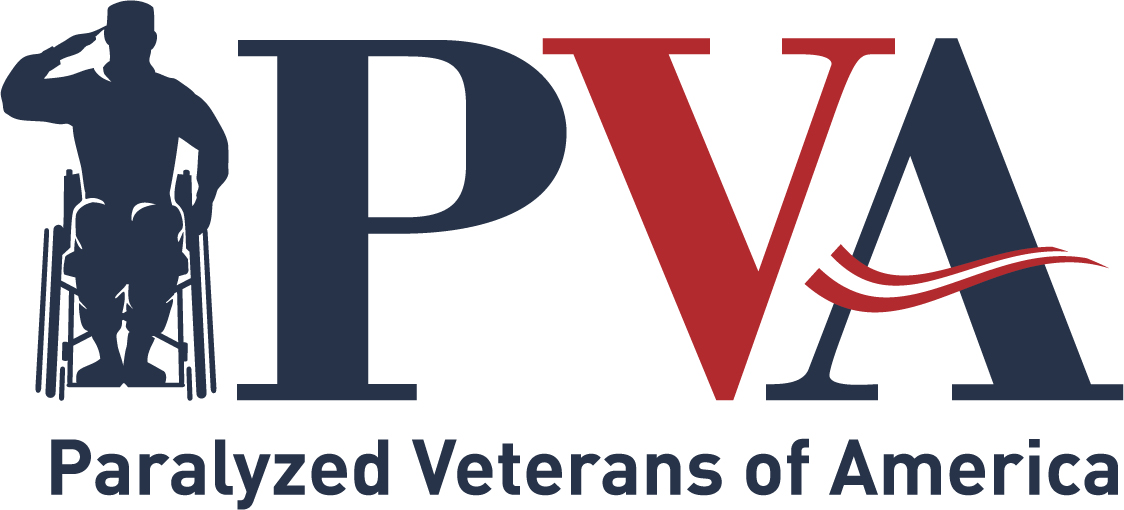
Table of Contents: Benefits Critical Issues
Monitor Implementation of the PACT Act
With the passage of the Sergeant First Class Heath Robinson Honoring our Promise to Address Comprehensive Toxics Act of 2022 (PACT Act) (Public Law 117-168) in August 2022, monitoring the implementation of this comprehensive legislation will be key to ensuring veterans can access their benefits and services. The PACT Act added more than 20 presumptive conditions related to toxic exposures, expanded health care for toxic-exposed veterans, and created a process for the Department of Veterans Affairs (VA) to consider additional presumptive conditions for any toxic exposure. Veterans from around the country advocated for the successful passage of this historic legislation. It is now just as important to ensure the PACT Act is implemented properly and VA has the resources to do so effectively.
Claims, Exams, and Adjudication
Congressional oversight of VA’s disability claims process will be critical throughout the implementation of the PACT Act. Transparency and data sharing are key to understanding VA’s ability to carry out the provisions of the legislation. It is important to monitor the number of PACT Act claims filed, how these claims impact workload, how many are approved and denied, and why. Understanding how VA manages the increase in claims will help Congress understand where resources are needed. In addition, resources must be used efficiently. For example, for many of the new PACT Act presumptive conditions, a service record and a current diagnosis should be sufficient to determine service connection. In these and other applicable cases, it may be unnecessary to require additional medical exams, which could further delay veterans claims. Using resources efficiently can ensure veterans receive their benefits without adding unnecessary delays.
Additionally, the Independent Budget veterans service organizations (IBVSOs) have witnessed an increase in predatory practices by unaccredited claims agents since the COVID-19 pandemic and with the recent passage of the PACT Act. Veterans may be vulnerable to companies that charge high fees to assist with claims, offering promises of increased disability ratings. Outreach and communications to veterans and raising awareness about these companies and how VA-accredited representatives can provide better assistance will be important in protecting veterans and their earned benefits.
The IBVSOs Recommend:
- Congress conduct oversight of all disability claims, including those related to the PACT Act, and require VA provide data on claims granted and denied, quality of exams and processing, as well as transparency regarding quality assurance.
- Congress pass legislation to reinstate penalties to crack down on bad actors that charge inappropriate fees for claims assistance.
Improve IT Systems, Develop and Monitor Claims Automation
To manage the increase in disability claims at VA, the Veterans Benefits Administration (VBA) and the Board of Veterans’ Appeals need funding and resources to develop new IT systems and reprogram existing ones. While VA has increased its staffing levels for claims Benefits Management System (VBMS), which serves as the backbone for disability compensation claims processing. The VBA’s IT systems are overdue for a significant update, which will require substantial investment and a clear action plan.
Congressional oversight over VA’s use of automation will be necessary to ensure that claims are processed promptly and accurately. Automation will be particularly helpful with PACT Act presumptive conditions that require less development, such as active cancers, where there is a need to process claims more quickly. While automation can assist in a faster claims process, the IBVSOs strongly advise that ratings specialists continue to provide the final review and decision even after a claim has been processed through an automated system. IT systems alone should not determine a rating decision without VBA staff reviewing for accuracy.
The IBVSOs Recommend:
- Congress provide VBA and the Board of Veterans’ Appeals the necessary funding and resources to improve IT systems and monitor claims automation processes.
- VA ensure that disability rating decisions are reviewed by a ratings specialist, particularly if any part of the claim has been through an automated process.
Training and Resources
Provisions within the PACT Act require VA to develop and provide toxic exposure training for claims specialists and health care providers. Reports in 2021 and 2022 by VA’s Office of Inspector General indicated that many of the identified errors that led to unfairly denied claims were a result of a lack of training.
The IBVSOs Recommend:
- Congress conduct oversight to ensure VA’s toxic exposure training is effective and conducted annually.
Health Care Eligibility
The PACT Act also extends health care eligibility to toxic-exposed veterans covered by the law but does so in five phases over the next 10 years. The IBVSOs are concerned that some veterans exposed to burn pits and other environmental hazards would have to wait up to a decade before becoming eligible for VA care, particularly when early detection and treatment might prevent serious negative health outcomes.
The IBVSOs Recommend:
- VA and Congress work together to make the administrative, regulatory, and statutory changes necessary to accelerate the phase-in of health care eligibility for all toxic-exposed veterans covered by the PACT Act.
Reform Survivor Benefits
The Department of Veterans Affairs’ (VA) Veterans Benefits Administration (VBA) administers and oversees Dependency and Indemnity Compensation (DIC) and a host of programs for veterans’ survivors. Many of these programs have not been evaluated or modernized in decades; thus, The Independent Budget veterans service organizations (IBVSOs) agree that after many years of neglect, survivors’ benefits are in immediate need of reform.
Created in 1993, DIC is a benefit paid to surviving spouses of service members who die in the line of duty or veterans who die from service-related injuries or diseases. DIC provides surviving families with the means to maintain some semblance of economic stability after losing their loved ones.
Increase DIC Rates
While DIC helps many survivors of disabled veterans, the value of the current benefit is insufficient to provide meaningful support to survivors of severely disabled veterans. A veteran who is married and rated 100 percent service-connected receives approximately $3,800 a month in disability compensation, whereas the current DIC benefit is a little over $1,500 a month. When a veteran receiving compensation passes away, not only does the surviving spouse have to deal with the heartache of losing their loved one, they also have to contend with the loss of nearly $28,000 of income annually. This loss of income to a survivor’s budget can be devastating, especially if the spouse was also the veteran’s caregiver and reliant on that compensation as their sole income source.
The rate of DIC payments has only been minimally adjusted since 1993. In contrast, monthly benefits for survivors of federal civil service retirees are calculated as a percentage of the civil service retiree’s Federal Employees Retirement (FERS) or Civil Service Retirement System (CSRS) benefits, up to 55 percent. This difference presents an inequity for survivors of our nation’s heroes compared to survivors of federal employees.
Additionally, the IBVSOs are greatly concerned by the negative economic impact felt by survivors and their families over the past two years. The inflation rate in 2020 was 1.23 percent compared to 8.25 percent as of October 2022.
The IBVSOs Recommend:
- Congress index the rate of compensation for DIC to 55 percent of a 100 percent disabled veteran with spousal compensation on par with what federal employee survivors receive.
Reduce the 10-Year Rule for DIC
If a veteran is 100 percent disabled, to include unemployable, for 10 consecutive years before death, their surviving spouse and minor children are eligible for DIC benefits if the death is not considered service-connected. Conversely, if that veteran dies due to a nonservice-connected condition before they reach 10 consecutive years of being totally disabled, their dependents are not eligible to receive the DIC benefit. This happens even though many surviving spouses put their careers on hold to act as primary caregivers for the veteran, and now with the loss of their loved one, they could potentially be left destitute. The IBVSOs agree that the requirement of 10 years seems arbitrary.
The DIC program would be more equitable for survivors if there were a partial DIC benefit starting five years after a veteran is rated totally disabled and reaching full entitlement at 10 years. This would mean if a veteran is rated as totally disabled for five years and dies, a survivor would be eligible for 50 percent of the total DIC benefit, increasing until the 10-year threshold and the maximum DIC amount is awarded.
The IBVSOs Recommend:
- Congress replace the current 10-year period for eligibility for DIC with a graduated scale that begins at five years and reaches full entitlement at 10 years
Waive the 8-Year Requirement for Surviving Spouses to Receive the “DIC Kicker”
Title 38, United States Code, Section 1311(a)(2) allows an additional DIC monthly payment to survivors, in the case of a veteran who at the time of death was in receipt of or was entitled to receive compensation for a service-connected disability that was rated totally disabling for a continuous period of at least eight years immediately preceding death. This monetary installment is referred to as the “DIC kicker.” Amyotrophic lateral sclerosis (ALS) is an aggressive disease that leaves many veterans incapacitated and reliant on family members and caregivers. Veterans diagnosed with ALS have an average lifespan of two to five years and are frequently unable to meet DIC’s eight-year requirement. VA already recognizes ALS as a presumptive service-connected disease and automatically rates any diagnosed veteran at 100 percent once service-connected, due to its progressive nature.
The IBVSOs Recommend:
- Congress extend increased DIC payments to surviving spouses of veterans who die from ALS regardless of how long they were service-connected with ALS prior to death.
Improve Dependents Educational Assistance
Spouses and surviving spouses eligible for educational benefits under Dependents Educational Assistance only have 10 years to apply for and complete these education programs, beginning either from the date the veteran is rated permanently and totally disabled or the date of the veteran’s death. Due to circumstances, such as the demands of raising children alone or needing to re-enter the workforce to supplement the loss of the decedent’s income, many survivors are unable to apply for or complete their education in a timely manner. Far too often, when a spouse is ready to utilize the benefit, the time period has lapsed, leaving them unable to further their education and improve their living circumstances.
The IBVSOs Recommend:
- Congress remove the 10-year delimiting date for spouses and surviving spouses to utilize their Chapter 35 benefits.


